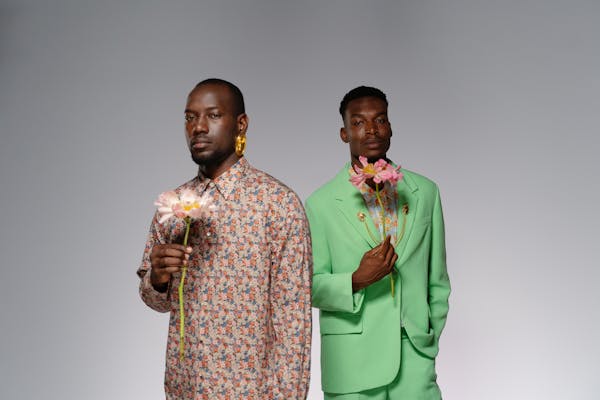Introduction
In today’s fast-paced world, the way we shop for clothes has a direct impact on the environment. The fashion industry is one of the largest contributors to pollution, with fast fashion pushing an unsustainable cycle of overproduction and waste. Thankfully, more consumers are becoming aware of these issues and are seeking out sustainable alternatives. Eco-friendly fashion is no longer a niche—it’s a movement, and it’s here to stay. If you want to update your wardrobe with pieces that are stylish, ethical, and good for the planet, you’re in the right place. This article will highlight 10 must-have eco-friendly pieces for your wardrobe, and show you how to dress greener while still looking fabulous.
What is Eco-Friendly Fashion?
Eco-friendly fashion refers to clothing, accessories, and footwear that are made using sustainable, ethical, and environmentally conscious practices. These pieces are often crafted from organic or recycled materials, produced in fair-working conditions, and designed with longevity in mind. The goal is to reduce waste, carbon footprints, and harmful chemical usage throughout the production process.
By opting for eco-friendly fashion, consumers are actively supporting brands and products that take the planet into consideration while creating high-quality pieces that are both trendy and timeless.
The Importance of Sustainable Fashion
Sustainable fashion is important because it addresses the environmental and social problems that come with the fast fashion industry. From the depletion of natural resources to unsafe labor practices, traditional fashion practices have numerous drawbacks. By choosing sustainable fashion, you’re contributing to:
- Less Waste: Eco-friendly brands focus on durability, meaning your pieces will last longer, reducing the need for frequent replacements.
- Lower Carbon Footprint: These products often have lower carbon emissions due to ethical sourcing and energy-efficient manufacturing.
- Support for Fair Labor: Many sustainable brands ensure their workers are treated ethically, paid fair wages, and work in safe conditions.
- Conservation of Resources: The use of organic, recycled, or renewable materials helps reduce the demand for virgin resources like petroleum and water-intensive crops.
The Environmental Impact of the Fashion Industry
The fashion industry is notorious for its adverse effects on the environment. Here are a few staggering statistics to put things into perspective:
- Water Usage: It takes about 2,700 liters of water to produce one cotton t-shirt, which is enough for one person to drink for 2.5 years.
- Textile Waste: The average American throws away about 81 pounds of clothing per year.
- Carbon Emissions: Fashion is responsible for around 10% of global carbon emissions—more than international flights and maritime shipping combined.
These numbers demonstrate just how much of an impact the fashion industry has on the planet. Transitioning to eco-friendly fashion can help mitigate these effects.
Why Choose Eco-Friendly Fashion?
The shift towards sustainable fashion is driven by several factors:
- Environmental Awareness: As the effects of climate change become more apparent, people are more inclined to support practices that help the planet.
- Social Responsibility: Consumers are increasingly holding brands accountable for their environmental impact and labor practices.
- High-Quality Products: Eco-friendly fashion often emphasizes durability, meaning that pieces last longer and save you money in the long run.
- Personal Satisfaction: Knowing that your clothing choices align with your values can provide a sense of fulfillment and empowerment.
10 Must-Have Green Pieces for Your Wardrobe
Now that we understand the importance of eco-friendly fashion, let’s dive into 10 essential green pieces that should be a part of every sustainable wardrobe.
1. Organic Cotton T-Shirts
Organic cotton is grown without the use of harmful pesticides and fertilizers, making it much gentler on the planet. Organic cotton t-shirts are a must-have basic for any eco-conscious wardrobe. They’re soft, breathable, and versatile, making them perfect for layering or wearing solo.
When shopping for organic cotton, look for certifications like GOTS (Global Organic Textile Standard) to ensure the product meets strict environmental and social standards.
2. Recycled Denim Jeans
Denim is one of the most popular materials in fashion, but traditional denim production can be harsh on the environment. Enter recycled denim! Made from pre-consumer waste or old jeans, recycled denim is a more sustainable alternative to virgin denim.
These jeans offer the same durability and classic style, but with a smaller environmental footprint.
3. Vegan Leather Jackets
Vegan leather is a cruelty-free alternative to animal leather that is made from synthetic or plant-based materials like cork, pineapple leaves, or apple peels. Not only does it look chic, but it also helps reduce animal cruelty and environmental damage caused by the leather industry.
A high-quality vegan leather jacket is a statement piece that adds both edge and sustainability to your wardrobe.
4. Eco-Friendly Activewear
Activewear made from sustainable materials like recycled polyester or organic cotton offers the same performance and comfort you expect from traditional workout clothes, but with less environmental impact. Look for brands that use eco-friendly dyes and manufacturing processes to further reduce their footprint.
These clothes will take you from your workout to casual outings, combining style, comfort, and sustainability.

5. Sustainable Footwear
Eco-friendly shoes are made from natural, recycled, or plant-based materials like organic cotton, hemp, or cork. Brands are increasingly incorporating recycled rubber and upcycled materials into their designs.
Not only will you be helping the environment, but you’ll also be wearing shoes that are just as stylish and comfortable as their traditional counterparts.
6. Recycled Polyester Jackets
Polyester is one of the most widely used fabrics in the fashion industry, but it’s also a plastic-based material that contributes to environmental pollution. Recycled polyester, on the other hand, uses post-consumer plastic bottles or waste fabric to create new fibers.
Recycled polyester jackets are a great choice for cold weather, offering warmth and weather resistance while reducing plastic waste.
7. Hemp Clothing
Hemp is a sustainable fabric made from the fibers of the hemp plant. It’s naturally resistant to pests, requires very little water, and grows quickly, making it one of the most eco-friendly textiles available.
Hemp clothing is durable, breathable, and perfect for creating a minimalist, yet stylish wardrobe.
8. Upcycled Accessories
Upcycling is the process of transforming old or unused materials into something new and valuable. When it comes to accessories, this might mean bags made from reclaimed fabrics or jewelry created from discarded materials.
Upcycled accessories add a unique touch to your wardrobe and help reduce waste by giving old items a new lease on life.
9. Bamboo Clothing
Bamboo fabric is made from the pulp of the bamboo plant and is incredibly sustainable. Bamboo grows quickly and doesn’t require pesticides, making it an environmentally friendly option.
Bamboo clothing is soft, moisture-wicking, and has natural antibacterial properties, making it ideal for loungewear or activewear.
10. Fair Trade Certified Apparel
Fair Trade certification ensures that the workers who produce the clothing are paid fair wages, work in safe conditions, and have access to social benefits. Buying Fair Trade certified apparel helps support communities around the world, ensuring that fashion is made with dignity and respect.
Look for the Fair Trade logo on clothing items to ensure your purchases contribute to positive social change.
How to Incorporate Eco-Friendly Fashion into Your Wardrobe
Transitioning to a more sustainable wardrobe doesn’t have to be overwhelming. Start by slowly replacing your old items with eco-friendly options, and choose quality over quantity. Keep in mind that less is more—buy items you truly love and will wear for years. Additionally, take care of your clothes by washing them less frequently and repairing items when necessary.
The Future of Eco-Friendly Fashion
The future of fashion is undoubtedly sustainable. As consumers demand more ethical and eco-conscious products, brands are evolving to meet these expectations. Innovations like biodegradable fabrics, closed-loop recycling systems, and zero-waste production methods are paving the way for a more sustainable fashion industry.
Conclusion
Eco-friendly fashion is more than just a trend—it’s a lifestyle choice that has long-term benefits for the planet, people, and your wardrobe. By incorporating green pieces into your closet, you can make a significant positive impact on the environment while still expressing your personal style. So, the next time you shop, remember that fashion can be chic, stylish, and sustainable.
FAQs
- What materials are considered eco-friendly in fashion? Eco-friendly materials include organic cotton, hemp, bamboo, recycled polyester, and vegan leather, among others.
- Is eco-friendly fashion more expensive? While eco-friendly pieces may have a higher upfront cost, they are often made to last longer, offering better value over time.
- How can I find sustainable fashion brands? Look for certifications like GOTS, Fair Trade, or B Corp when shopping. Many brands are transparent about their sustainable practices.
- Can eco-friendly clothing be stylish? Absolutely! Eco-friendly fashion comes in all styles—from minimalist basics to bold statement pieces. There’s something for everyone.
- What is the best way to care for eco-friendly clothing? To extend the life of your clothes, wash them in cold water, air dry them, and avoid excessive ironing or dry cleaning.

